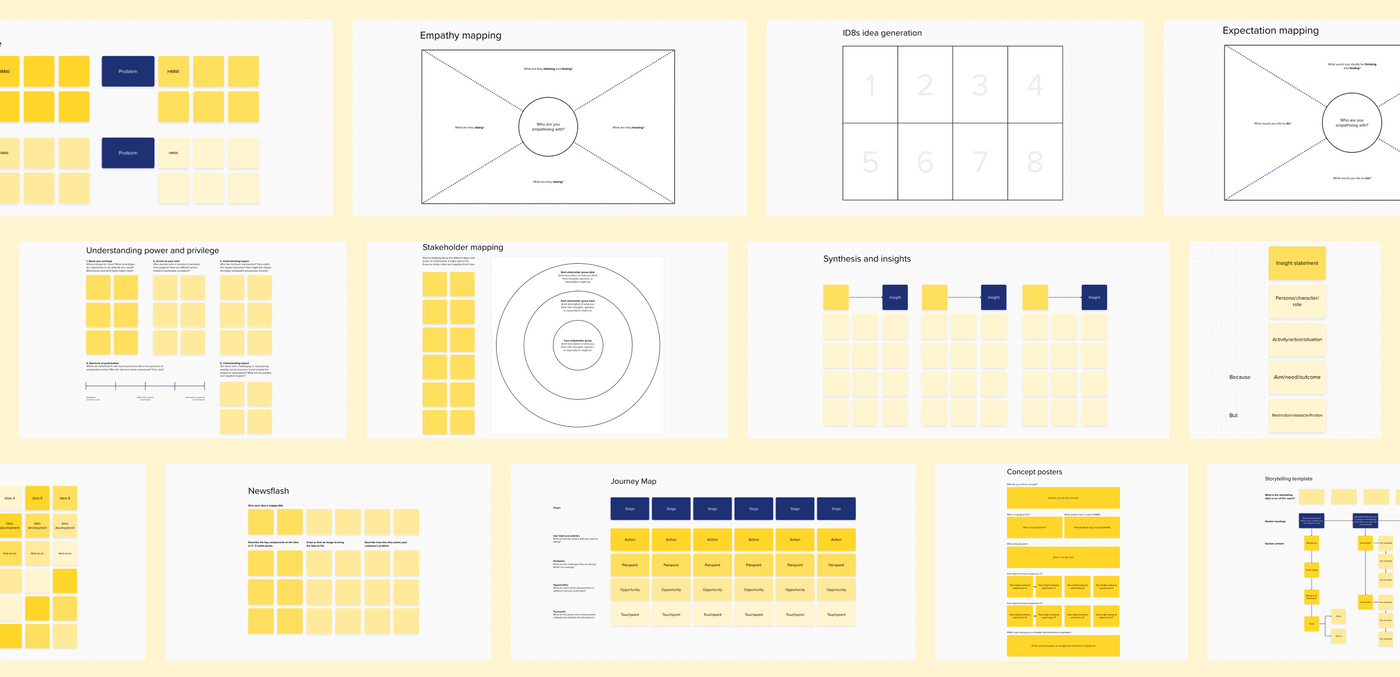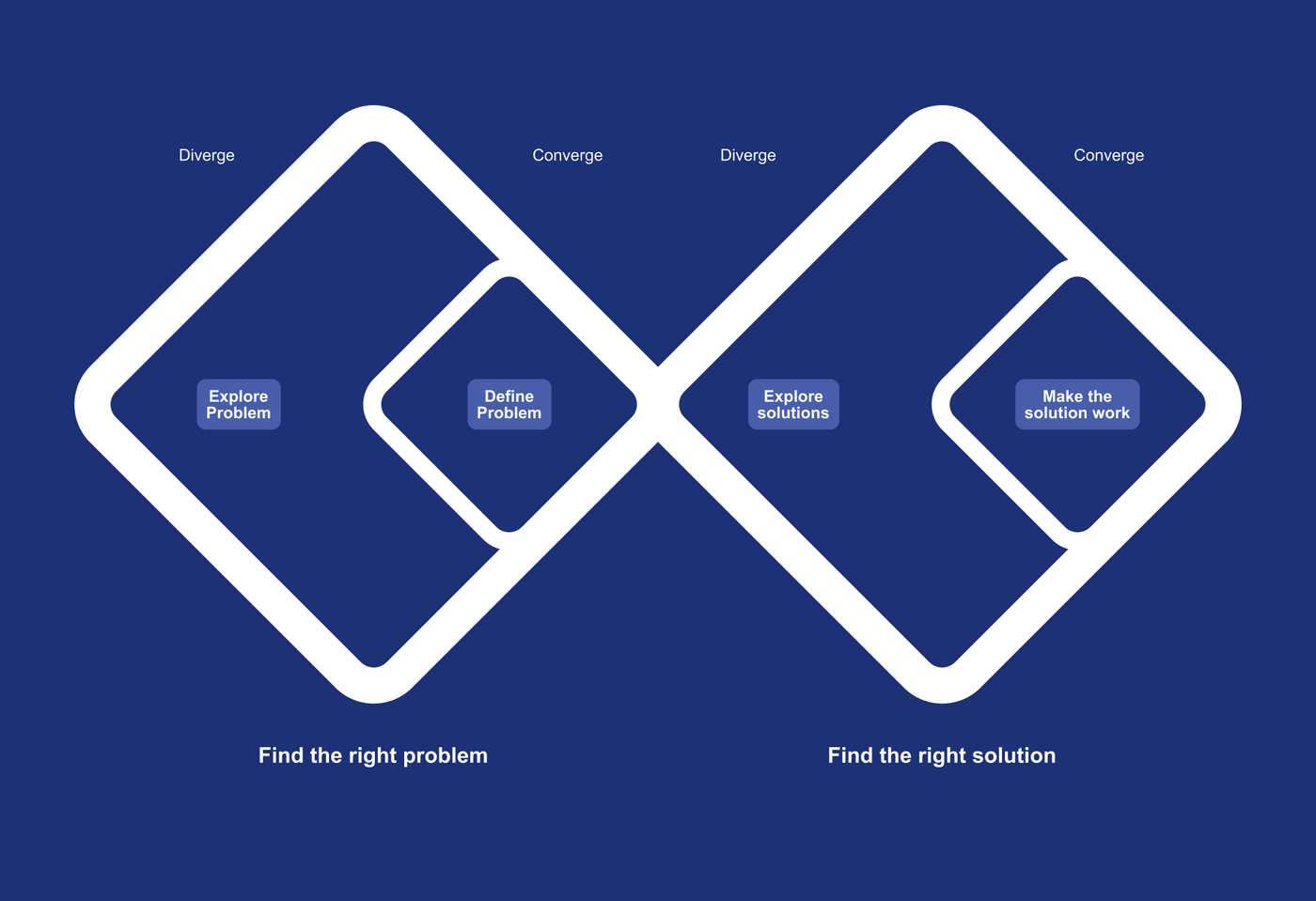Ambulance Victoria provides emergency medical care and transport to more than 5.8 million people across Victoria.
Until recently its cultural and operational model has been centred on logistics and transport, or in their words, how to get a patient from A to B as quickly as possible.
Recognising the limitations of this model, particularly post Covid, Ambulance Victoria has set about transforming its model of care and services to be more people-centred and flexible.
As part of this transformation they established the Patient Care Academy (PCA), which has a dedicated team of people-centred designers. Part of PCA’s function is to build capability across Ambulance Victoria in design thinking and in doing so help drive systemic change in how it provides patient care throughout Victoria.

The Opportunity
The challenge we were tasked with was to develop a guided resource that provides the necessary information, frameworks, and tools to help their teams embed a more people-centric approach into their ways of working.
However, Ambulance Victoria recognised that a resource alone wouldn't be enough to drive engagement, build capability and foster the cultural transformation that was needed. For that reason, we worked alongside PCA to co-produce the resource together.
This meant inviting them behind the scenes so that they could participate in the design process. This approach meant that their learning was both relevant to their unique context and gave them hands-on experience using the different tools and methods.
Perhaps most critically, the process of co-creation means that the Patient Care Academy is now better equipped to support capability uplift more broadly across the organisation.
Our Approach

1. Research
Our initial research focused on a market scan of current design guides and toolkits to find out what already existed that could be helpful for our work. In our research we reviewed a variety of design guides and for each one considered its audience; content style and format; key benefits and any highlights or key takeaways.
2. Engaging with stakeholders
Next we conducted an in-depth workshop with Ambulance Victoria’s key stakeholders to agree on a shared vision and a clear set of objectives for the project. During the workshop we also explored their individual needs and what they wanted to see included in the guide.
3. Defining the structure
We used this information to understand common themes and to define the vision, purpose and scope of the work. During this phase we also grouped and prioritised common content elements to include (and exclude).
This included both content topics like ‘What is co-design?’ as well as the overall content approach like what tone and style of language to use. We translated this into a content outline for what would be included and an accompanying content guide for how it would be written and presented.
4. Development and design
PCA tested the content topics and approach with their internal teams to discover what they liked and didn’t and what opportunities there might be for further inclusions and refinements. It was during this time that we learned of their need for the guide to be something ‘living’ that would integrate with their daily workflows rather than something static that they needed to seek out.
Initially we’d planned to develop the Guide as a clickable PDF that Ambulance Victoria could publish to their website and update periodically. However, their desire to have something more interactive that would integrate into their daily workflow prompted us to explore other alternatives and designing it as a Sharepoint site.
Key benefits of designing it in Sharepoint:
- It’s built on the same platform as their intranet so that it’s embedded as part of their daily operating environment and workflows.
- Information is easier to find and engage with for staff
- Managing content updates and edits is simple and fast
- Reduces risks associated with version control across published editions.
Outcomes
We didn’t just design another toolkit, we created a strong foundation for Ambulance Victoria to build capability within their team to drive systemic change in patient care across Victoria.
Ambulance Victoria now has:
- A plain language design guide that embraces respectful approaches to design right along the spectrum of engagement.
- A dedicated Sharepoint site so that their Guide is in a format that is usable and integrates with their operational environment and workflow.
- A strong foundation to support capability building within the organisation and drive transformational change towards delivering more people-centred care and services.
Reflections
I really liked the way the Portable team explained how they go about a task, and how they justify their decisions. I'm so glad I had the opportunity to work with and learn alongside the Portable team. Not only did we achieve something in a short time, version 1 is infinitely better than it would have been without their expertise.
- Natalie Bemrose, Ambulance Victoria.
I loved the opportunity to take Ambulance Victoria behind the scenes of how we work and include them in the design process. I feel like the collaboration was richer for it and resulted in better outcomes for the team, both in terms of their learning and the final product.
- Shoni Ellis, Portable.
Team
- Shoni Ellis, Content Strategist
- Sophie Turner, Design Strategist
- Alexandre Lekic, Experience Designer
- Tess Waterhouse, Producer